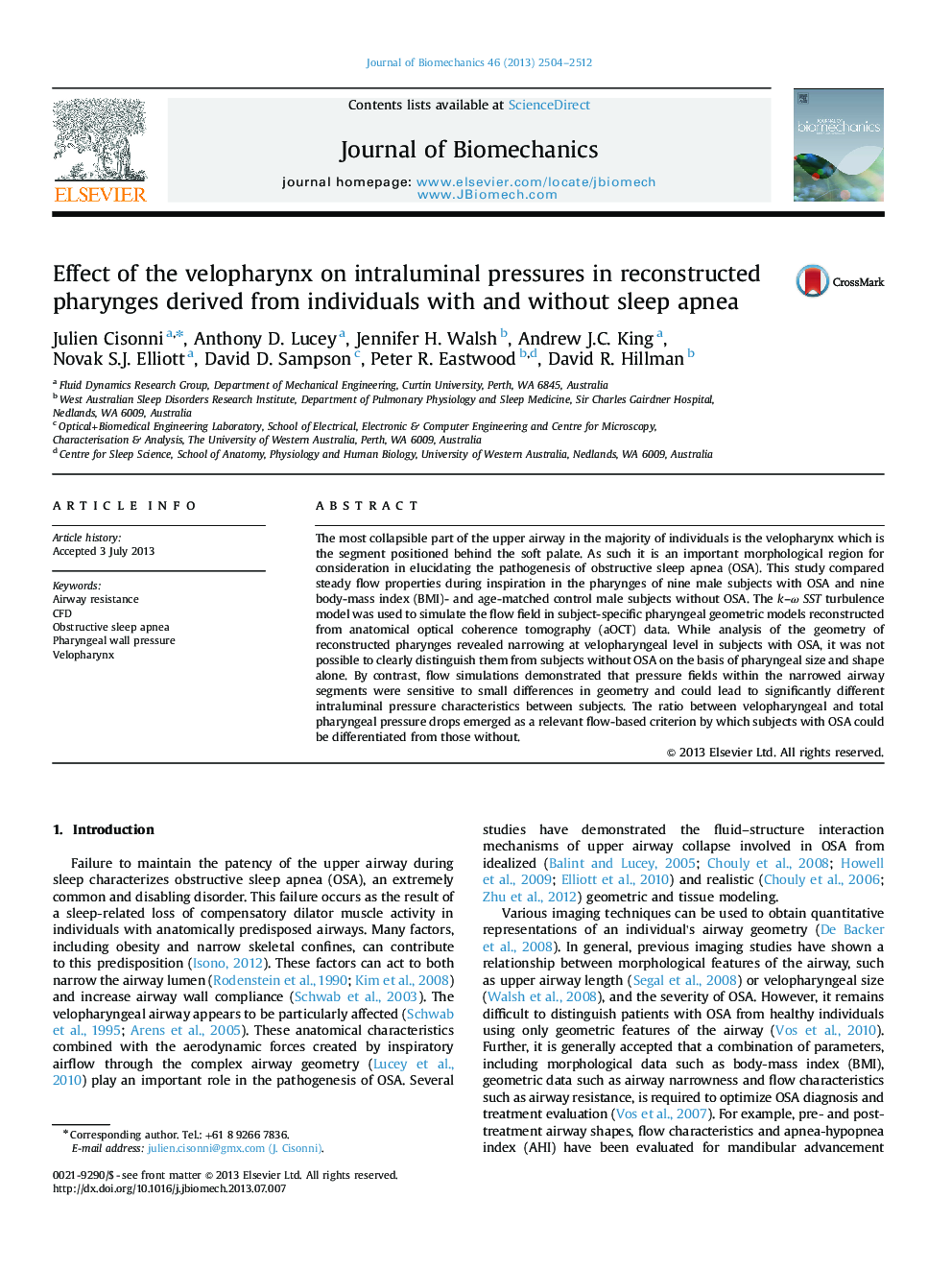| Article ID | Journal | Published Year | Pages | File Type |
|---|---|---|---|---|
| 10432498 | Journal of Biomechanics | 2013 | 9 Pages |
Abstract
The most collapsible part of the upper airway in the majority of individuals is the velopharynx which is the segment positioned behind the soft palate. As such it is an important morphological region for consideration in elucidating the pathogenesis of obstructive sleep apnea (OSA). This study compared steady flow properties during inspiration in the pharynges of nine male subjects with OSA and nine body-mass index (BMI)- and age-matched control male subjects without OSA. The k-ÏSST turbulence model was used to simulate the flow field in subject-specific pharyngeal geometric models reconstructed from anatomical optical coherence tomography (aOCT) data. While analysis of the geometry of reconstructed pharynges revealed narrowing at velopharyngeal level in subjects with OSA, it was not possible to clearly distinguish them from subjects without OSA on the basis of pharyngeal size and shape alone. By contrast, flow simulations demonstrated that pressure fields within the narrowed airway segments were sensitive to small differences in geometry and could lead to significantly different intraluminal pressure characteristics between subjects. The ratio between velopharyngeal and total pharyngeal pressure drops emerged as a relevant flow-based criterion by which subjects with OSA could be differentiated from those without.
Related Topics
Physical Sciences and Engineering
Engineering
Biomedical Engineering
Authors
Julien Cisonni, Anthony D. Lucey, Jennifer H. Walsh, Andrew J.C. King, Novak S.J. Elliott, David D. Sampson, Peter R. Eastwood, David R. Hillman,
